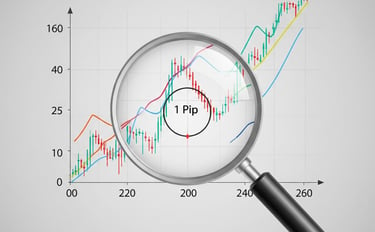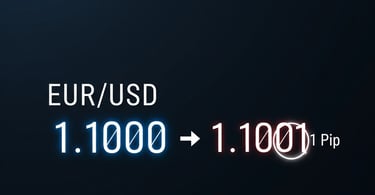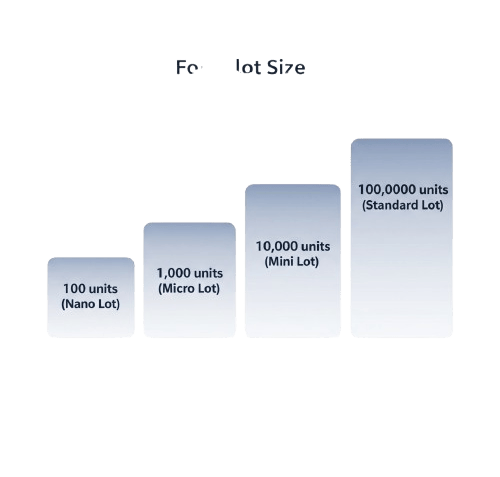Pips, Lots & Leverage Explained: Mastering Forex Lingo in 2025
Pip stands for "Percentage in Point." It’s the smallest price movement in a currency pair. For most major pairs, 1 pip = 0.0001.
Example:
EUR/USD moves from 1.1000 to 1.1005 → that’s a 5 pip increase.
Some brokers also quote in fractional pips (a.k.a. pipettes), which are 1/10th of a pip.
What Is a Pip?
Pip stands for "Percentage in Point." It’s the smallest price movement in a currency pair. For most major pairs, 1 pip = 0.0001.
Example:
EUR/USD moves from 1.1000 to 1.1005 → that’s a 5 pip increase.
Some brokers also quote in fractional pips (a.k.a. pipettes), which are 1/10th of a pip.


What’s a Lot?
A lot is the volume or size of your trade — how much currency you're buying or selling.
Standard Lot = 100,000 units
Mini Lot = 10,000 units
Micro Lot = 1,000 units
The lot size directly impacts your risk. A bigger lot means more movement per pip.


Understanding Leverage
Leverage lets you control a larger position with a smaller amount of money. It’s shown as a ratio like 1:100 or 1:500.
With 1:100 leverage, $100 in your account can control $10,000 in trades.
Sounds great? Yes — but it’s also risky. High leverage amplifies both your profits and losses.
🔍 Bonus Forex Lingo to Know in 2025
To really master the Forex space, here are more terms you’ll run into:
🧠 Advanced & Intermediate Forex Terms
Currency Cross Pair: A pair without the USD (e.g. EUR/JPY).
Major Pairs: Most traded pairs (e.g. EUR/USD, GBP/USD).
Minor Pairs / Exotics: Involve emerging market currencies (e.g. USD/TRY).
Drawdown: How much you’ve lost from your peak balance.
Equity: Account balance + current profit/loss.
Free Margin: Available funds to open new trades.
Margin Call: Broker alert when your margin is too low.
Swap / Rollover: Interest gained or paid for overnight trades.
Hedging: Trading in opposite directions to reduce risk.
Scalping: Fast trades for small profits.
Day Trading: Enter/exit within a day.
Swing Trading: Hold trades for days/weeks.
Trendline: Line showing price direction.
Support/Resistance: Price zones where price tends to bounce or stall.
Breakout: When price moves above/below key levels.
Slippage: Trade executes at a different price than expected.
ECN Broker: Direct market access with tighter spreads.
Stop Hunting: Price manipulation to trigger stop-losses.
Risk-to-Reward Ratio (R:R): Measures how much you risk vs. gain.
Final Words
You don’t need to memorize everything on day one — but having a solid grip on this terminology will massively help your trading confidence. In 2025, understanding the language of Forex is just as important as knowing when to click “buy” or “sell.”
Start small, stay curious, and don’t trade with money you can’t afford to lose.
Happy trading!
